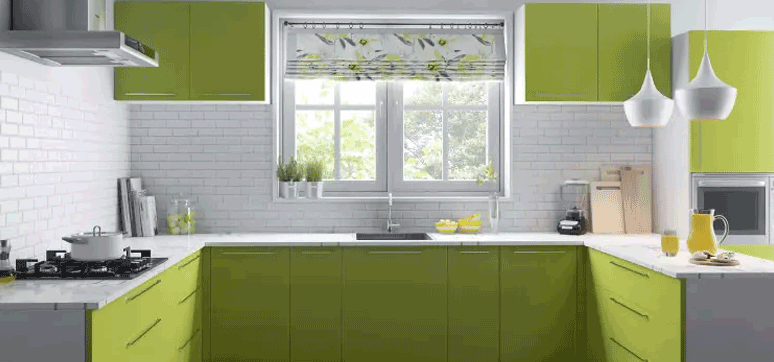Often referred to as the heart of the home, the Kitchen holds a special place where families come together, meals take shape, and nourishment is shared. Delving into the realms of Vastu for kitchen design unveils a pathway to foster positive energy flow and harmony in this pivotal space.
Vastu Shastra, an ancient Indian architecture science, is a guiding light in aligning living spaces with nature’s rhythms and energy flows. It lays down principles beyond mere aesthetics, encompassing directions, spatial geometry, and the thoughtful selection of colours and materials.
The Significance of Vastu for Your Kitchen:
Applying Vastu principles to your Kitchen isn’t just about aesthetics; it’s about planning an environment that supports the entire household’s health, happiness, and prosperity. By understanding and implementing kitchen Vastu direction, you pave the way for the seamless circulation of energies between the cooking and dining areas. These principles are pivotal in maintaining the delicate balance that ensures positive family relationships and aids digestion.
Essential Vastu Guidelines for an Optimal Kitchen Design
1. Strategic Placement:
When considering Vastu for the Kitchen, the location within your home plays a pivotal role. Ideally situated in the southeast corner, adhering to the Vastu for kitchen guidelines, this positioning aligns with the fire element. It is believed to create a positive atmosphere, enhancing the cooking and dining experience.
2. Heart-Centered Cooking:
At the core of the Kitchen, the cooking stove takes centre stage. Following Vastu’s Kitchen principles, positioning the cooking stove in the southeast direction is recommended. It lines with the natural flow of energy, fostering a sense of balance and harmony during meal preparation.
3. Organised Spaces:
Vastu for Kitchen advocates the importance of maintaining an organised and clutter-free environment. Ensure that storage cabinets are strategically positioned in the southern and western segments of the Kitchen. This arrangement facilitates a smooth energy flow, promoting efficient storage and organisation.
4. Air and Light Harmony:
Ventilation and natural light contribute significantly to a positive kitchen atmosphere. In line with Vastu’s kitchen principles, consider incorporating windows or exhaust fans in the east or northeast direction. This thoughtful placement allows for the infusion of fresh air and sunlight, elevating the overall energy within the space.
5. Colourful Vibrations:
In the Vastu palette for kitchen design, colours play a crucial role. Opt for soothing and warm hues like yellow, orange, or light shades of green. These colours are believed to invoke positive energy, creating a pleasant atmosphere in line with the principles of Kitchen Vastu Direction.
Flowing Harmony: Kitchen Sink Vastu Energies
Whenever we talk about Kitchen Vastu Direction, the placement of the kitchen sink holds significant importance. As the sink represents the water element, it is advised to position the sink in the northeast corner, aligning with Vastu principles. Avoiding the southwest ensures harmony by preventing a clash with the earth’s elements.
The running water in the northeast sink symbolises flow and circulation, facilitating easy cleaning and harnessing the purifying energy of the rising sun. Additionally, having the sink in a position where the person washing faces a wall promotes stability, contributing to an environment that fosters harmony and alleviates anxiety.
Vastu Guidelines for Stove Placement:
The stove symbolises the fire element and finds its ideal placement in the southeast corner of the Kitchen. This corner, associated with the Hindu deity Agni, embodies fire and digestion, creating a harmonious cooking space. Avoiding locations under beams, as well as the north or west corners, is advised.
Ensure the stove flames don’t directly face the southeast door, promoting enhanced awareness for the cook, who should ideally face eastward while cooking. Adequate ventilation over the stove facilitates smoke escape, preventing stagnation and maintaining a positive cooking environment.
Conclusion
Embracing Vastu for kitchen design contributes to a harmonious living environment, emphasising considerations like kitchen Vastu direction, cooking stove placement, organisation, ventilation, and colour scheme. This holistic approach empowers homeowners to fashion a space that nurtures positive energy and overall well-being while recognising the need to adapt these principles to individual preferences and practical constraints for a balanced and comfortable living experience.


